Emergencies can happen anywhere at any time. Small-scale incidents occur frequently and are dealt with effectively by the emergency services.
More rarely 'major incidents' can occur which require a response beyond the day-to-day resources of the emergency services. This is when special arrangements are put in place and local authorities and other organizations help to support the emergency services.
Our aim is to be prepared to respond to any major emergency affecting the borough, to provide support and care to local people, to get things back to normal as soon as possible, and to assist with the long-term recovery of the community.
Bahay Toro is a barangay in Quezon City. Its population as determined by the 2015 Census was 70,774. This represented 2.41% of the total population of Quezon City. Bahay Toro is situated at approximately 14.6661, 121.0275, in the island of Luzon. Elevation at these coordinates is estimated at 38.0 meters or 124.7 feet above mean sea level.
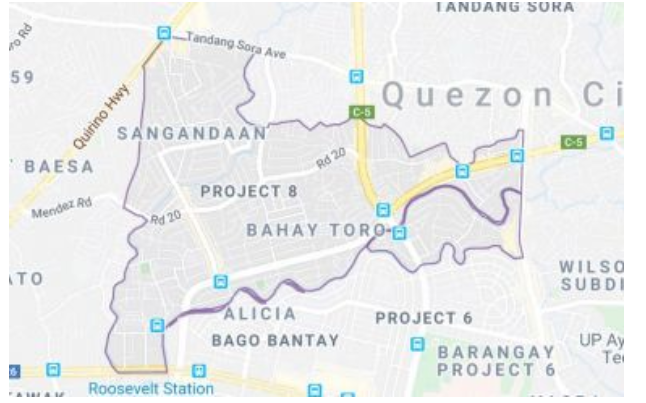
It's hotline numbers are:
0956-0810809 / 09997839739
According to the 2015 Census, the age group with the highest population in Bahay Toro is 20 to 24, with 7,717 individuals. Conversely, the age group with the lowest population is 75 to 79, with 555 individuals.
The population of Bahay Toro grew from 46,930 in 1990 to 70,774 in 2015, an increase of 23,844 people. The latest census figures in 2015 denote a positive growth rate of 0.33%, or an increase of 1,224 people, from the previous population of 69,550 in 2010.
Typhoons are one of the biggest natural disaster threats in the Philippines, if not the biggest natural disaster threat that could flood a whole neighborhood. And preparing for these types of natural disasters is very important. Many of the people living here in Bahay Toro know this and have set their homes in ways that flooding wouldn't be very easy. Some homes have like these "stepping stones" type of design for protection against flooding.
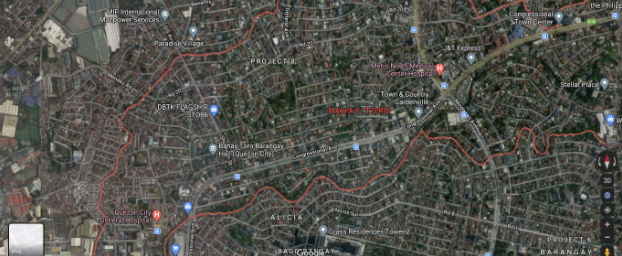
Throughout Bahay Toro there are a lot of gutters and drains to keep flooding less "destructive" you could say.
As you can see, from the map there aren't very close lakes or oceans to Bahay Toro. However, there is a river very close to Bahay Toro. You can see the "outline" of the river with the red line you can see on the map.
Our Evacuation Center
A. Bahay Toro Covered Court 2 (Formerly known as the BTHBA Cover Court)
B. Sitio Militar Covered Covered Court
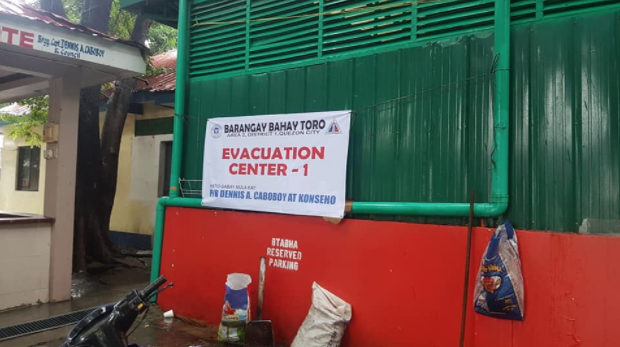
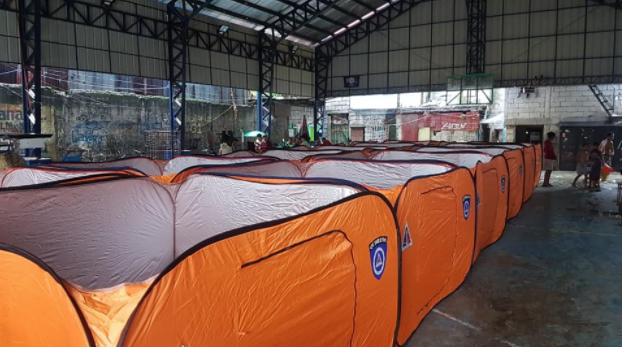
Hotlines:
Quezon City Hotline 122;
Emergency Operations Center: 0916-630-6686, 0947-885-9929;
Emergency Medical Services/Urban Search and Rescue: 892-843-96 (landline); 0947-884-7498 (Smart) 0927-061-5592 (Globe)
If a Typhoon does occur we have an Incident Management Team and Response Clusters always on standby.
Be sure to stockpile items for your wellbeing like:
Water - A person can only last 3 days without water. So it is very important to stockpile lots of water.
Food - A person can only last 3 weeks without food. So it is a very good idea to also stockpile lots of food. Examples are: Canned meat, Canned vegetables and such.
First Aid Kit - A container/bag that contains medical supplies is very important if someone got an injury or the likes. Examples of some are: bandages, disposable rubber gloves, adhesive plasters, alcohol, and etc.
You must also pack a battery operated radio for you to stay updated on the news. And you can listen in to what you should do. Bringing a whistle could also be very handy, since it can make a loud noise and tell the others that someone is still there.
An Evacuation Plan is very important each home should be very aware of their house and they should also have instructions in what to do during a Typhoon. (Ex of the picture below.)
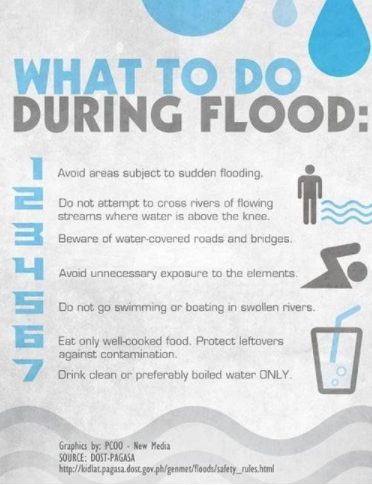
After the typhoon has settled. We will send out the Incident Management Team and Response Clusters to scout out the damage, check for any survivors, and rescue them immediately and carefully.
While the Incident Management Team and Response Clusters are doing their jobs. We will call emergency hotlines for support. And ask for rescue boats if the flood does get high.
Once, the survivors are taken to the evacuation center/s they will be given the supplies.
Our aim here is to restore the affected area to its previous state. Recovery efforts are primarily concerned with actions that involve rebuilding destroyed property, re-employment, the repair of other essential infrastructure, as well as the re-opening of essential services in the hospital.
We could also ask the construction workers and engineers for a modification of the households. Like, adding metal frames and such. To make them more sturdier.We could also ask the construction workers and engineers for a modification of the households. Like, adding metal frames and such. To make them more sturdier.
Disaster planning and timely preparedness should always seek to create awareness among the vulnerable groups of individuals in the communities hence ability to combat both man-made and natural disaster comprehensively.
During the storm season, disaster can be from flooding, blowing off rooftops and fires triggered by electric lines.
Therefore, disaster prepared proves to be a key point for the management team to confirm the materials and resources needed during disaster management.
Disaster preparedness also keeps the service teams such as: the government offices, hospitals and community help groups be alert hence react with speed in an event of a disaster. In addition, disaster preparedness ameliorates the incidence of fear for victims of the disaster.
Finally, with comprehensive planning and disasters preparedness, the committee
will manage to save lives and destruction of property.